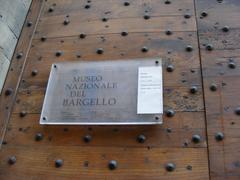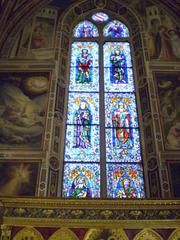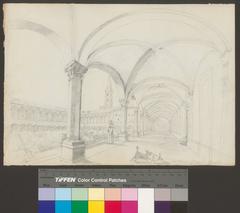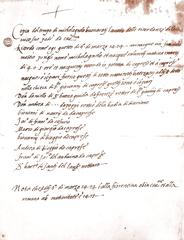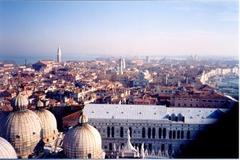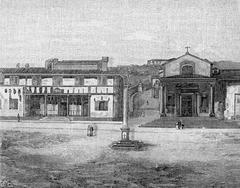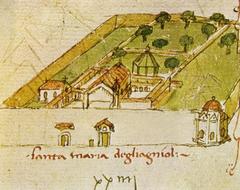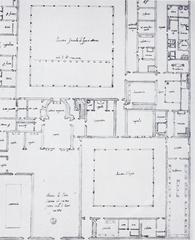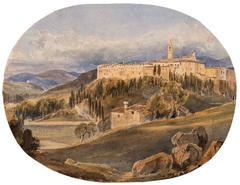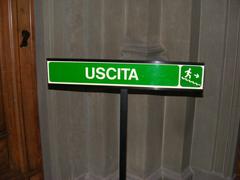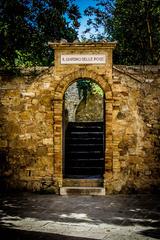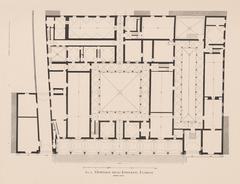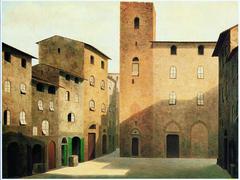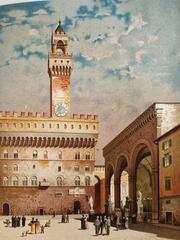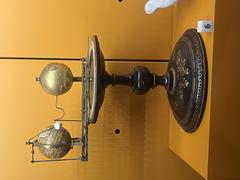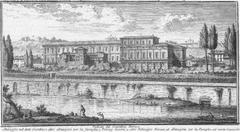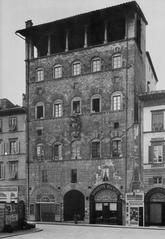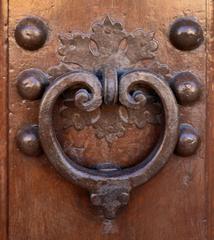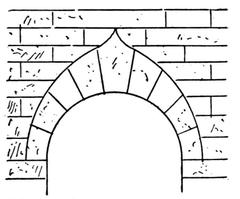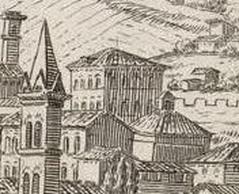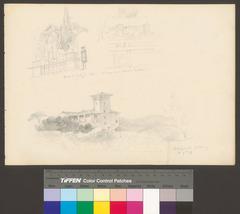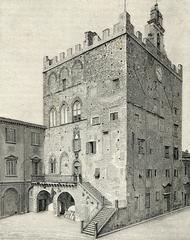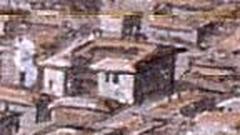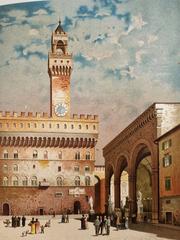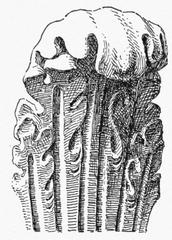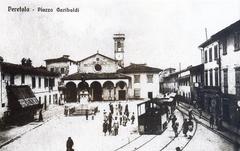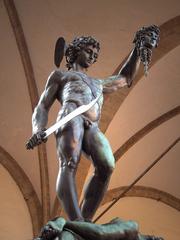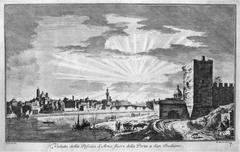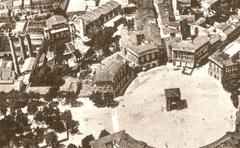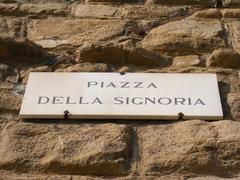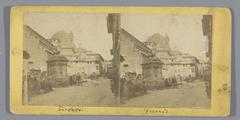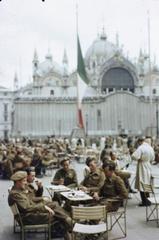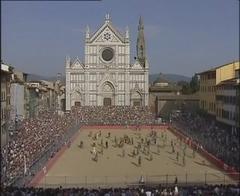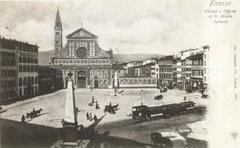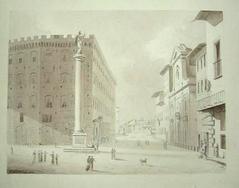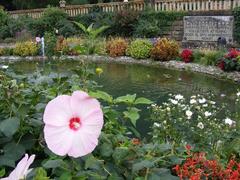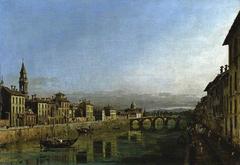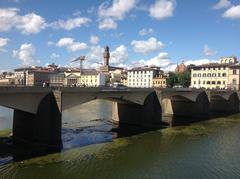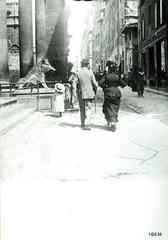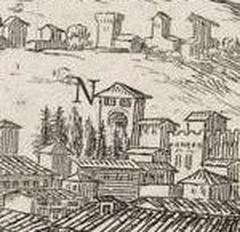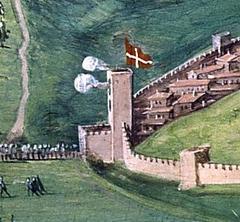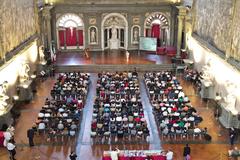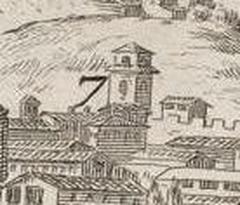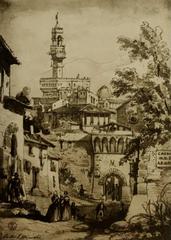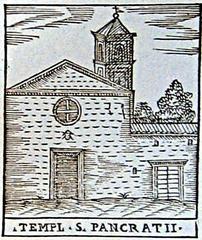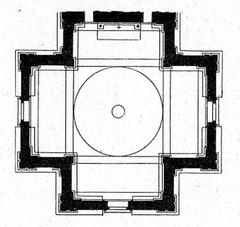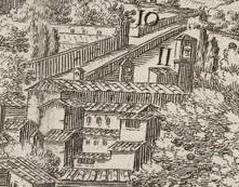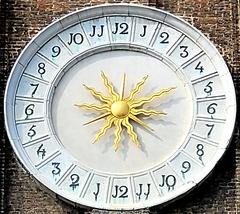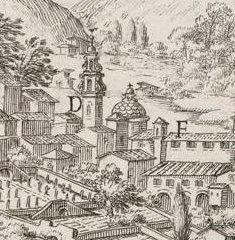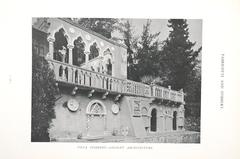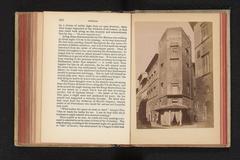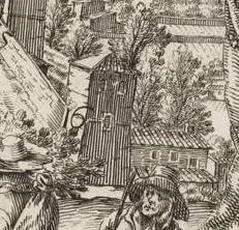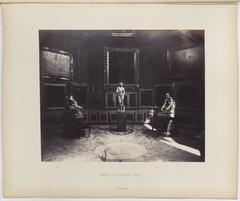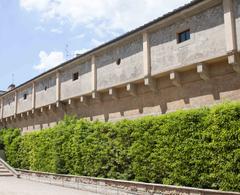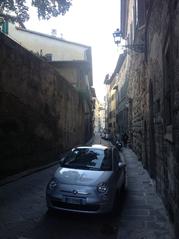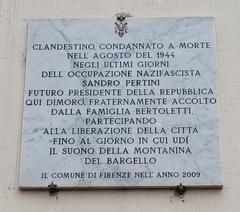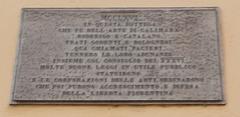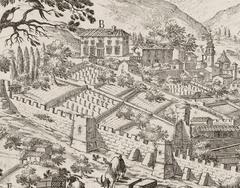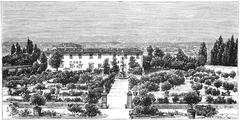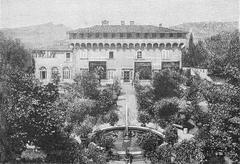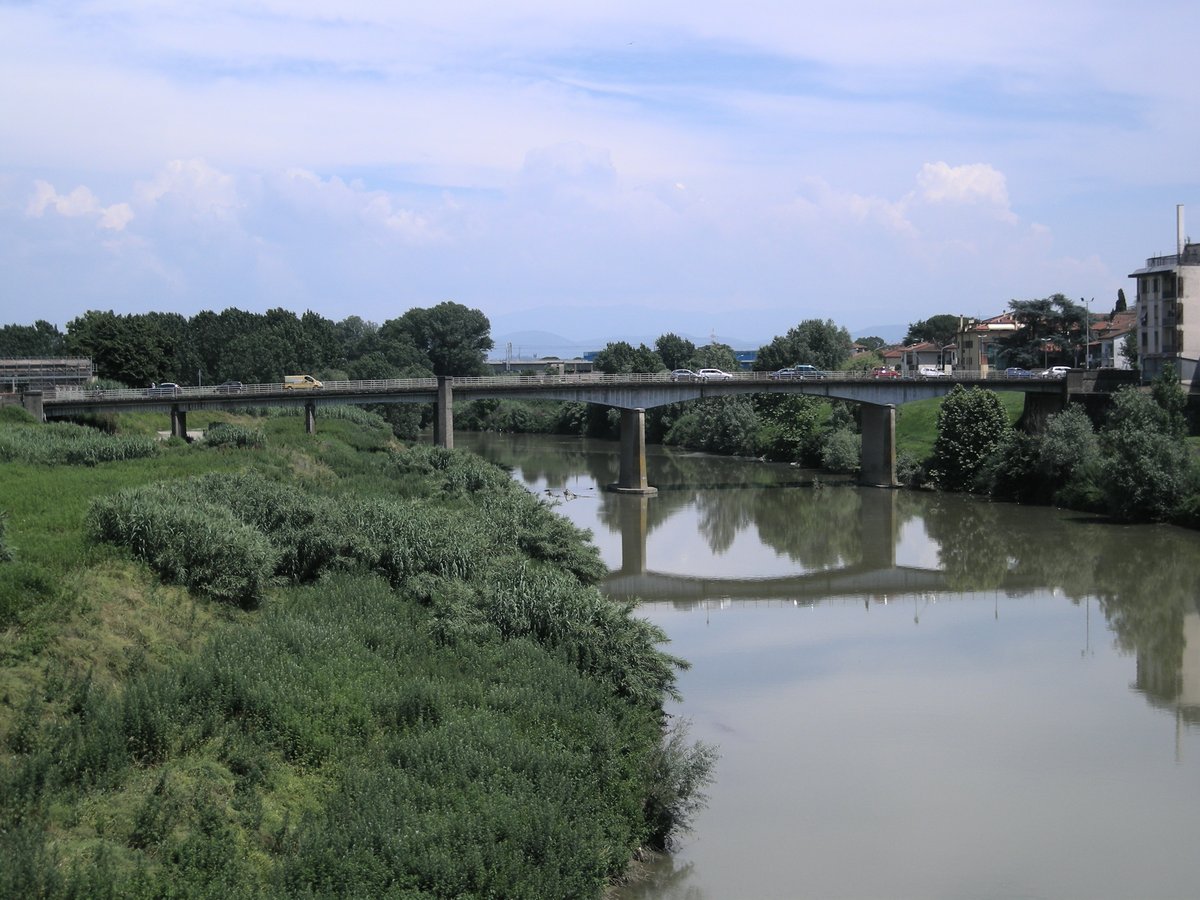
Visiting Ponte a Signa - Ponte Nuovo sull’Arno: Hours, Tickets, and Tips
Date: 01/08/2024
Introduction
Discover the rich history and cultural significance of the Ponte Nuovo sull’Arno, also known as Ponte a Signa or Ponte di Signa. This iconic bridge has been a critical infrastructure element and a landmark in the Tuscany region for centuries. Located between Lastra a Signa and Signa, the Ponte Nuovo sull’Arno has played a pivotal role in connecting communities, facilitating trade, and reflecting the region’s historical evolution. From its early wooden construction in the 12th century to its modern reconstruction post-World War II, the bridge’s journey mirrors the resilience and adaptability of the local populace. This comprehensive guide will delve into the historical background, provide essential visitor information, and offer practical travel tips to enhance your visit to this remarkable Florentine landmark. Whether you are a history enthusiast, a cultural explorer, or a casual visitor, the Ponte Nuovo sull’Arno offers a unique glimpse into the past and present of Tuscany. For more detailed information, you can refer to the official sources such as Wikipedia and Visit Florence.
Table of Contents
- [Historical Background](#historical-backgroundhistorical-background)
- [Early Beginnings and Medieval Significance](#early-beginnings-and-medieval-significanceearly-beginnings-and-medieval-significance)
- [Transition to Stone](#transition-to-stonetransition-to-stone)
- [Strategic Military Importance](#strategic-military-importancestrategic-military-importance)
- [Reconstruction and Modifications](#reconstruction-and-modificationsreconstruction-and-modifications)
- [World War II and Modern Reconstruction](#world-war-ii-and-modern-reconstructionworld-war-ii-and-modern-reconstruction)
- [Cultural and Historical Significance](#cultural-and-historical-significancecultural-and-historical-significance)
- [Comparative Analysis with Other Florentine Bridges](#comparative-analysis-with-other-florentine-bridgescomparative-analysis-with-other-florentine-bridges)
- [Architectural Evolution](#architectural-evolutionarchitectural-evolution)
- [Impact of Natural Disasters](#impact-of-natural-disastersimpact-of-natural-disasters)
- [Wartime Destruction and Reconstruction](#wartime-destruction-and-reconstructionwartime-destruction-and-reconstruction)
- [Visitor Information](#visitor-informationvisitor-information)
- [Visiting Hours](#visiting-hoursvisiting-hours)
- [Tickets](#ticketstickets)
- [Travel Tips](#travel-tipstravel-tips)
- [Accessibility](#accessibilityaccessibility)
- [Special Events and Guided Tours](#special-events-and-guided-toursspecial-events-and-guided-tours)
- [FAQs](#faqsfaqs)
- [Conclusion](#conclusionconclusion)
- [References](#referencesreferences)
Historical Background
Early Beginnings and Medieval Significance
The Ponte Nuovo sull’Arno, commonly known as Ponte a Signa or Ponte di Signa, has a rich history dating back to the early 12th century. The first documented mention of the bridge dates to 1120, when it was constructed entirely of wood (Wikipedia). This wooden structure served as a crucial crossing point over the Arno River, connecting Lastra a Signa and Signa. Its strategic importance was underscored by its role as the only significant bridge between Florence and Empoli, making it vital for trade and travel.
In 1278, the wooden bridge collapsed, disrupting communication between the river’s right and left banks. This event had significant ecclesiastical implications, as it allowed the pieve of San Martino a Gangalandi to obtain a baptismal font from the Archdiocese of Florence, a privilege previously denied due to the proximity of the pieve of Signa (Wikipedia).
Transition to Stone
By 1287, the bridge was reconstructed in stone, as evidenced by its depiction on the coat of arms of Signa, featuring a seven-arched structure (Wikipedia). This transition from wood to stone marked a significant advancement in the bridge’s durability and functionality, ensuring it could better withstand the elements and the increasing traffic of the time.
Strategic Military Importance
During the Middle Ages, the bridge’s strategic importance grew due to its proximity to Porto di Mezzo, a key port for Florence, and its role as a crossing point towards Pistoia and Prato. Recognizing its value, Florence erected a defensive tower on the bridge in the 13th century (Wikipedia). However, in 1326, the bridge was destroyed by Castruccio Castracani after he captured the castle of Signa, aiming to prevent Florentine forces from advancing from Lastra a Signa or San Martino a Gangalandi (Wikipedia).
Reconstruction and Modifications
The bridge was promptly rebuilt in 1327, and further restorations were undertaken in the 15th century. These modifications included the removal of some arches to allow larger vessels to pass underneath, reflecting the evolving needs of river traffic (Wikipedia). The last significant intervention before the modern era occurred in 1822, ensuring the bridge remained functional and relevant.
World War II and Modern Reconstruction
The bridge’s history took another dramatic turn during World War II. In 1944, retreating German forces destroyed the bridge to hinder the advance of Allied troops. It was subsequently rebuilt in 1948, slightly upstream from its original location, near the former site of the Oratory of the Crucifix of Sant’Anna, to accommodate automobile traffic (Wikipedia).
Cultural and Historical Significance
The Ponte a Signa has not only been a vital infrastructure element but also a cultural and historical landmark. Its continuous use and reconstruction over the centuries reflect the resilience and adaptability of the local communities. The bridge’s ability to endure and evolve through various historical periods, from medieval times to the modern era, underscores its significance in the region’s history.
Comparative Analysis with Other Florentine Bridges
To fully appreciate the historical significance of Ponte a Signa, it is useful to compare it with other notable bridges in Florence, such as the Ponte Vecchio and Ponte alla Carraia. The Ponte Vecchio, for instance, is renowned for its medieval origins and its survival through numerous floods and World War II (Smarthistory). Similarly, the Ponte alla Carraia, initially constructed in 1218, has undergone multiple reconstructions due to floods and wartime destruction (Flashpacking Italy).
Architectural Evolution
The architectural evolution of Ponte a Signa mirrors broader trends in bridge construction in Florence. The transition from wood to stone in the late 13th century was a common practice aimed at enhancing durability and functionality. This shift is also evident in the construction of the Ponte Vecchio, which was rebuilt in stone in 1345 after being destroyed by a flood (Florence Wise).
Impact of Natural Disasters
Natural disasters, particularly floods, have played a significant role in shaping the history of Florentine bridges. The Ponte Vecchio, for example, was rebuilt multiple times due to flood damage, with the most notable reconstruction occurring in 1345 under the direction of Taddeo Gaddi (Florence with Locals). Similarly, the Ponte alla Carraia has a history of being repeatedly destroyed and rebuilt due to floods (Italian Traditions).
Wartime Destruction and Reconstruction
The destruction and subsequent reconstruction of bridges during World War II is another common theme. The Ponte Vecchio was the only bridge in Florence spared by the retreating German forces, who instead destroyed the buildings on either side to block access (Visit Florence). In contrast, the Ponte alla Carraia and Ponte a Signa were both destroyed and later rebuilt to accommodate modern transportation needs (Flashpacking Italy).
Visitor Information
Visiting Hours
The Ponte Nuovo sull’Arno is accessible 24/7, allowing visitors to explore its historical significance at any time. However, it is advisable to visit during daylight hours to fully appreciate the architectural details and surrounding scenery.
Tickets
There is no entrance fee to visit the bridge itself. However, nearby attractions and guided tours may have associated costs. Check local tourism websites for the latest information on ticket prices and tour availability.
Travel Tips
- Getting There: The bridge is easily accessible by car, bike, or public transport from Florence. Consider taking a scenic walk along the Arno River for a more immersive experience.
- Best Time to Visit: Spring and early autumn offer the most pleasant weather for exploring the bridge and its surroundings.
- Nearby Attractions: Don’t miss the historical sites in Signa, including the Church of San Giovanni Battista and the Museo della Paglia e dell’Intreccio.
Accessibility
The bridge and its surroundings are generally accessible to visitors with mobility issues. However, some areas may have uneven surfaces, so it is advisable to check accessibility options in advance.
Special Events and Guided Tours
Occasionally, the local tourism board organizes special events and guided tours focusing on the bridge’s history and significance. These events provide a deeper understanding of the bridge and its role in the region’s cultural heritage. Check the official Signa tourism website for upcoming events and tour schedules.
FAQs
What are the visiting hours for Ponte Nuovo sull’Arno?
The bridge is accessible 24/7, but it is best visited during daylight hours.
How do I buy tickets for Ponte Nuovo sull’Arno?
There is no entrance fee for the bridge itself. Tickets may be required for nearby attractions and guided tours.
Conclusion
The historical background of Ponte a Signa, or Ponte Nuovo sull’Arno, is a testament to its enduring significance in the region. From its early wooden construction in the 12th century to its modern reconstruction in the mid-20th century, the bridge has played a crucial role in connecting communities and facilitating trade and travel. Its history of destruction and reconstruction, whether due to natural disasters or wartime actions, mirrors the broader historical trends observed in other notable Florentine bridges. The continuous evolution of Ponte a Signa underscores its importance as both a functional infrastructure element and a cultural landmark, reflecting the resilience and adaptability of the local communities it serves.
For more information on visiting Ponte Nuovo sull’Arno and other historical sites in Signa, download the Audiala mobile app, check out our other related posts, and follow us on social media for updates.

